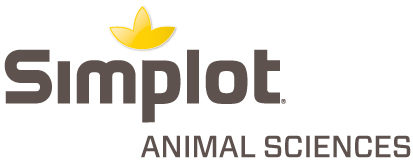“Labor is one of our biggest issues,” says Hank Hafliger of Cedar Ridge Dairy in the Magic Valley.
One factor that has contributed to the challenge is the size of the typical dairy operation. “It used to be that the dairy industry was primarily run on family labor,” says Rick Naerebout, chief executive officer of the Idaho Dairyman’s Association. “There is much less dependence on family labor now.” Economies of scale demand more animals and, consequently, extra help.
Unfortunately, dairies tend to be located in rural areas where laborers are somewhat limited. Then, too, says Naerebout, “Most domestic workers view all ag jobs as undesirable.” Pay, benefits, hours and physical intensity all play into this. As a result, Naerebout says about 90% of dairy workers in the western U.S. are foreign-born, with about 85% of the total coming from Mexico. “We need these foreign workers,” says Hafliger, “and the workers themselves want to be documented but also want to have visas to remain long term at their jobs.”
The issue is that while many other agricultural sectors can take advantage of the H-2A program to find foreign workers to fill the labor gap, there is no year-round option. “There’s a quandary of no visa program for dairymen,” says Naerebout.
While technically a dairy producer can enroll in H-2A to find help for seasonal tasks related to crops and forage, any task related to livestock handling is off-limits. An H-2A employee engaging in these activities – even once – would be violating his visa. “The guys that do farming do some,” says Hafliger of participation in H-2A. But for most of Idaho’s dairymen, it is no solution to the labor problem.
“I think there are plenty of workers who would love to come into the U.S. on a longer term to work in the animal industry,” says Hafliger. He adds, “We need to have a long-term program available. The dairy industry is so technical – with the knowledge required – you don’t want to train a guy and then lose him after three months … I would like to see us develop some kind of [work] visa for a set time – at a minimum, for five years.”
Who’s milking the cows?
With domestic workers limited and visas hard to come by, the elephant in the room is the question of where current labor is sourced. “We have no undocumented workers,” says Hafliger. “We require documentation.”
Some workers in Idaho’s dairies are legal immigrants. Others come through a refugee program in Twin Falls, with the documentation and references provided by the program. However, the construction and service industries draw many of these to Sun Valley.
There is also quite a market in creating false documents for illegal immigrants. “Our dairymen all fill out I-9 forms,” says Naerebout. “If the documentation looks real, the employer is prohibited from speculating on whether it is real. … They are required to accept it for the I-9 form.” While employers deduct payroll taxes for such employees under their false Social Security numbers, the employees can neither file their taxes nor collect the Social Security benefits they have earned. During the previous Trump administration, says Naerebout, 600,000 no-match letters were sent to employers nationwide to inform them that they had employees whose names and Social Security numbers did not match. “But the letters said they were not to be used to deem legal status,” says Naerebout.
In short, some Idaho dairies are likely employing workers who have entered the country illegally. But there’s nothing they can do about it. And if those workers left, it’s unclear who would fill that gap.
A proposed solution out of D.C.
However pressing the problem may be in Idaho, states cannot issue visas. It must be addressed on a national level. “Most everybody can agree that we need to do a better job of making it easier to enter this country legally,” says Donald Grady, senior director of legislative affairs for the International Dairy Foods Association (IDFA), a lobbying group supporting dairy manufacturing and marketing.
Idaho’s Rep. Mike Simpson was one of 10 co-sponsors of the most recent attempt at getting at this problem, the bipartisan Farm Workforce Modernization Act (FWMA) of 2023. This bill had already passed the House in 2019 and 2021, and did so again in 2023, but has never made it to the Senate floor.
“It’s very political at the end of the day,” says Grady. The bill as written applies only to farm labor, not to processors. However, he says, IDFA supports the bill because “Ensuring we have an adequate supply of milk is important to us.”
FWMA would reform the H-2A program to include producers with year-round labor needs, including dairymen. Advocates also say it would improve flexibility for employers while still protecting workers.
“It would [also] open up a pathway to legalization for the workers who make up the backbone of agriculture,” Grady says. This aspect is the main point of contention. At minimum, it would provide a path to legalization for workers who have been working in American agriculture, have a clean criminal record and agree to continue working in agriculture for a period of time. At maximum, it would provide a way for these people to achieve citizenship. “FWMA would not require them to leave the country to begin the program,” explains Grady.
This aspect would also protect producers who are – knowingly or not – employing illegal immigrants, as the alternative would be to lose the workers with whom they’ve built relationships and on whom they’ve come to depend. But on the flip side, says Grady, “To a lot of people that sounds like amnesty. They have broken the law.”
While the bill has a long way to go before passing, Grady is pleased by the outcome of a 2024 bipartisan Agricultural Labor Working Group, which recommended many of IDFA’s desired changes to H-2A, including adding processors to eligible employers. “Industries that have H-2A don’t want to see it opened up because it would dilute their access,” he says. Therefore, any such expansion of H-2A would necessitate raising the cap on visas.
Until Congress can reach an agreement to pass a bill, availability of agricultural labor will depend heavily on the executive branch’s enforcement of current laws. “At this point, it’s a waiting game to see how the president reacts once he takes office,” says Grady.
Meanwhile, back on the farm
In the meantime, dairy producers in Idaho are faced with the difficulty of filling such positions as milkers, feeders, managers and “outside guys” so the cows get milked today and tomorrow. They sometimes use advertisements via social media, radio and TV, but Hafliger says that much recruitment takes place via word of mouth among employees.
In many cases, potential hires have the option to be choosy. “The unemployment rate in the Magic Valley is really low,” says Naerebout. “Producers can’t not take really good care of their workers, or they’ll go somewhere else.”
“We do everything possible to keep our employee partners in a great work situation so they’re happy to come to work,” says Hafliger. He believes those working on his dairy are looking for more than a paycheck. “They want to have the knowledge that they are appreciated and contribute to society,” he says. “We try hard to provide that. What we dairymen need is a long-term solution to our labor shortage and to labor retention.”





